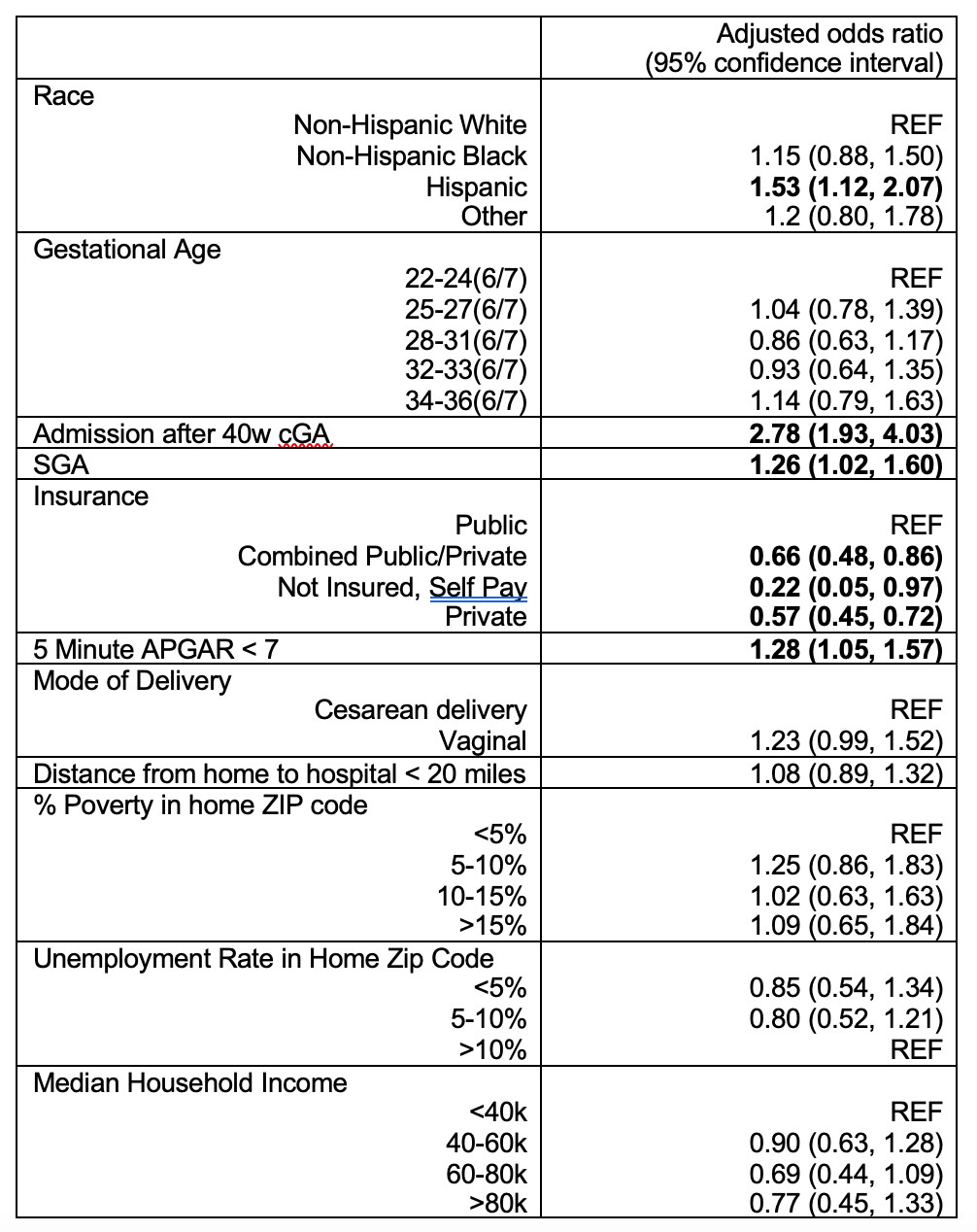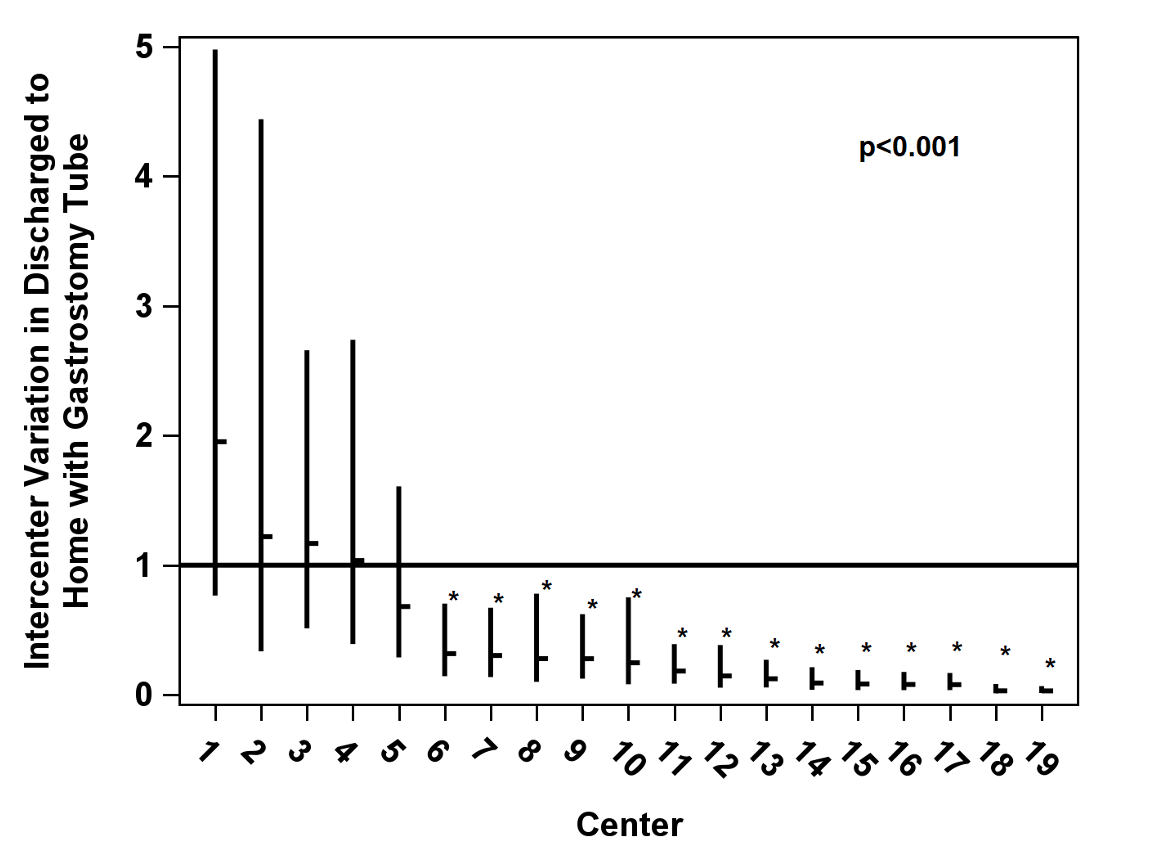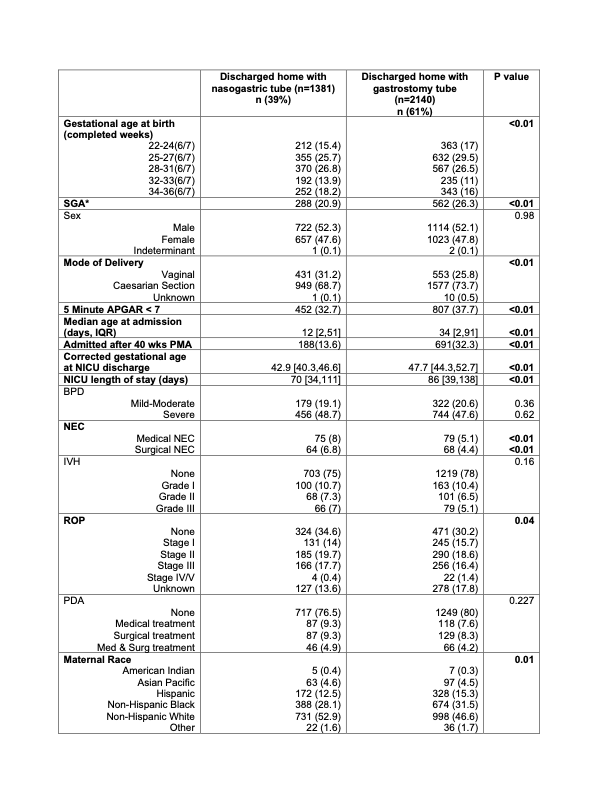Neonatal-Perinatal Health Care Delivery: Epidemiology/Health Services Research
Neonatal-Perinatal Health Care Delivery 1: Epi/HSR Equity
617 - Prevalence, Predictors, and Inter-Center Variability of Nasogastric Tube versus Gastrostomy Tube Feeding at Hospital Discharge Among Preterm Infants
Publication Number: 617.14

Pavika Varma, MD (she/her/hers)
Fellow Physician
Children's Hospital Colorado
DENVER, Colorado, United States
Presenting Author(s)
Background:
Surviving preterm infants are at high risk for oral feeding dysfunction and may require enteral tube feeds via a nasogastric tube (NGT) or a gastrostomy tube (GT) upon discharge from the neonatal intensive care unit (NICU). How this clinical practice varies by social determinants, specifically maternal race/ethnicity, remains uncertain.
Objective: To describe the prevalence and inter-center variability of GT vs NGT use, and to estimate the associations between medical and social factors and GT use in preterm infants discharged from Children’s Hospital Neonatal Consortium (CHNC) NICUs.
Design/Methods: This retrospective cohort study used CHNC data from 42 level IV NICUs between 2015-2020. Preterm infants born < 37 weeks gestation, without significant medical comorbidities limiting oral intake (including grade 4 IVH), and who were discharged home with NGT or GT were included. Demographic and clinical characteristics of preterm infants by tube feeding modality were compared, and the independent relationship between these characteristics and tube feeding modality was estimated with multivariable logistic regression. Inter-center variability was quantified using adjusted center odds ratios.
Results: Infants receiving GT were more likely to born more prematurely (p< 0.01), SGA < 10th percentile (p< 0.01), APGAR at 5-min < 7 (p< 0.01), and referred to CHNC hospital later (12 vs 34 days of age p< 0.01). Center variability (Figure 1) in GT use was prominent (OR range 0.03-19.5, p< 0.001). Multivariable analyses showed that maternal Hispanic ethnicity (aOR 1.53, 95% CI = 1.12, 2.07) was independently associated with GT use after adjusting for insurance status, SGA, 5-min APGAR < 7, gestational age, and timing of referral > 40 weeks PMA. In secondary analysis, GT use was associated with an increased length of stay (GT: 86 d vs. NGT: 70 d), and correspondingly, discharge age was older (GT: 47.7 vs. NGT: 42.9 wks PMA, p< 0.01).
Conclusion(s): Maternal Hispanic ethnicity was independently related to GT use among tube-fed, preterm surviving infants. This result raises the possibility that differential care is provided to different ethnic groups regarding post-discharge feeding management. Understanding the indications of GT use for different racial/ethnic groups will assist in creating standardized post-discharge tube-feeding recommendations.


